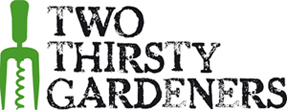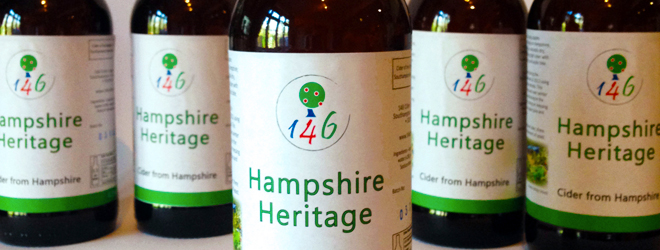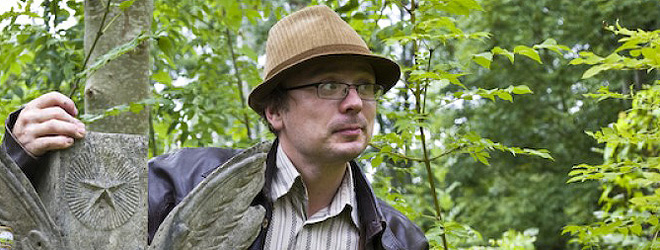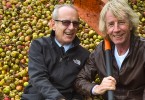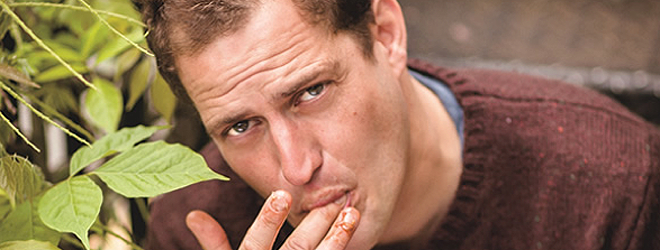Hello Jez. Tell us, how did you first get into cidermaking?
There was one major factor really; my daughter. Cariad was born with a genetic condition called Spinal Muscular Atrophy (type 1) and wasn’t expected to see her second birthday. It was an incredibly painful and growing experience which was all the more stressful as she had a 12 week stop in hospital which included some nastiness that very nearly ended in a ‘right to life’ court case.
As a result of all of this, I needed an outlet – some way of ‘stepping away’ from the situation. Disappearing outside to press some apples was just what the doctor ordered. In the first year I made 25 litres – and I was probably the only one brave enough to drink it. But the bug took hold and I determined I wanted to make the best cider I could…
Cidermaking can be rewarding in many ways. We are particularly fond of the apple harvest and the drinking bit. What is it about the process that appeals to you the most?
Milling and pressing apples is probably my favourite bit – though this has to be coupled with tasting the results early June the following year. I realise that these things have to make money, but probably my biggest weakness is that I seek to make the best cider first and foremost. It gives me immense pleasure in seeing people enjoy my cider. That is probably why I make cider that covers the traditional cidermaking styles: if they don’t like the tannin of Wild West, then they may like the milder Hampshire Heritage… or even the light sharpness of Eastern Delight… it is amazing that the only difference in these ciders is the varieties of apples that go into them!
Rereading that paragraph, I can definitely say that I have a lot of favourite parts in the cidermaking process!
Tell us about the Cider Workshop… When, how and why did you start?
That is a long and probably old story now – a lot of water has passed under the cidermaking bridge! Suffice to say, Cider Workshop was not the first forum and resource for cidermakers… and to this day I get some people say that it was a shame that its predecessor, UKCider had a meltdown.
UKCider had all got a bit nasty towards its end, and I had tried (unsuccessfully) to negotiate with its owner to change his approach. But my major role was to gather and facilitate the group of people who were to shape what Cider Workshop came to be. Well, that and write a website and negotiate forum software and agree the principles for the thing. But it wasn’t just me that did it – not by a long shot.
Now, 4 years on, the Workshop has over 1400 members worldwide, great links with NACM and the regional associations, still a somewhat variable (but nevertheless good) relationship with CAMRA and I can safely say that it is owned by its members – with a little bit of prodding from admins now and again. I am very happy to have been a part of it!
With Andrew Lea, Rosie Grant and Dick Dunn amongst others, you’ve got an impressive list of experts on call. How did you get them on board?
Well, Andrew and Dick have been there from the start – and thinking back, Rose knew about it but declined being too proactive (other than supportive). Essentially a lot of the impetus was being able to give Andrew a platform for the amazing advice that he offers so freely. I have learned even more now, both through Andrew and Dick, about negotiating the industry – you could add Nick Bradstock (of NACM fame) to that list too. I have been most privileged!
When we started we figured a critical mass was 100 members. We all had developed friendships and I would be lying if I didn’t say that the lure of Dr Lea wasn’t attractive to cidermakers. We quickly past 100.
I believe that the Workshop has a very clear mission – it isn’t all things to all people. It is promoting and working for the traditional cider or perry producer. It doesn’t campaign or have a position in itself on anything. You don’t have to follow one school of thought about the process of cidermaking either (although mention fruit ciders and see what the masses feel!!) I think all of this makes the Cider Workshop an attractive support group – I am always surprised to hear who in the industry follows it!
You’ve gone commercial with your own ‘146 cider’. What’s behind the name, and how’s business?
146 Cider Company is now in its 5th year of commercial activity and it has grown from 1,000 litres to 7,000 litres during that time. I am just trying to master the art of stretching supply to a 12 month basis and mainly sell the cider around Hampshire. It is going very well indeed. I have just won my seventh award, so am looking forward to 2014 immensely!
I find the whole thing of the name very amusing these days. It is great when a cider drinker asks, usually in hushed tones, what the meaning of the name is. Often people assume it is how many varieties of apple I use. No, its not. It’s the number of my house.
Cider companies are often named after a farm, or location or the makers’ name. I live in a Victorian farm workers house (the farm was sold off in the 1930’s and is a housing estate now). Its original name is ‘Thornleigh’, but is more usually just 146. So, it made sense to me… and by happy accident has worked very well: many events when building their cider list on a computer tend to sort alphabetically – so 1 comes before A. I couldn’t have planned it better!
Our cidermaking is still on a small scale. We started with a 12 litre Vigo press and are now using a car jack powered ‘Ray Press’. (designed by Cider Workshop contributor, Ray Blockley) What equipment resides in your own cider shed?
Ha ha – I have a steel Raypress that my father in law welded together for me. I used it right up to the point when 146 Cider was born. An excellent design (though I must confess that Ray is a mate of mine, so I may be biased!)
I now use a Voran P1 hydraulic press – although may have to upgrade that in the next year or two (it is a funny thing that even before you take delivery of the next big kit you are planning beyond that!). Basically, it will press 100kg of pulp to produce 70 litres of juice in about an hour – less if its good, fibrous cider fruit.
I also use a Voran RM2.2 mill, which will eat through 50kg of fruit in around 5 minutes. This was my last purchase is quoted as milling up to 2 tons per hour. I think a few things will need to be improved before I can test that fully.
Being a one man operation, I am always looking at the weak points, or the most laborious processes. However, you have to weigh each decision based upon remaining faithful to what ‘traditional’ means: I don’t think it means using a horse and straw, but similarly, it is not making cider from a tin.
You ran a tutored cider tasting at last years Bath & West Show.* You are always going to get a captive audience handing out free samples, but was it nerve racking to see peoples reaction to your own cider?
No, it was fun. I have learned that developing a taste for real cider is a journey – you don’t drink Strongbow one day and then unfiltered, heavy farmhouse cider the next (not saying that my cider is in any way heavy farmhouse cider!!) They are not used to bold or intense flavours and, sadly, the marketeers and supermarkets have persuaded people that drinks need to be sweet!
Neither do people often understand what the difference is between styles, or what juice contents are. And why should they – we are the ones who care, so we have to find a way to articulate that to the masses.
Funnily enough, the cider that I used during that tutorial was Eastern Delight; an eastern style of cider made just from dessert fruit. More than once my own has been the only example of that on hand, so why not use it to demonstrate the difference.
What’s the best piece of advice you can give to the aspiring cidermaker?
Learn the craft. Don’t expect to make the best cider straight away and, no, it’s not all about money! Join the Cider Workshop and ask stupid questions and, have fun. If it isn’t fun then it’s a slog… and no one wants to slog!
Cider makers can be a vocal bunch, and there’s been a few ‘ heated discussions’ develop on the Cider Workshop over the years. We think it’s time you put to bed one of these arguments. Which region produces the best cider? West or East?
Both! The best examples of cider made are from both ends of the spectrum and the worst examples of cider come from both ends too. They each have a unique and similarly long historical tradition and are equally valid. Sometimes, some people have a hard time setting aside prejudice to be able to see this.
Finally Jez, could you tell us your 3 desert Island ciders?
Headless Man, Ross on Wye Cider Company
Somerset Pomona, Somerset Cider Brandy Company
Hampshire Heritage, 146 Cider Company (well, have to remind myself of what I have achieved!!)
*Jez is a member of this years cider judging panel, and will be found sampling many ciders within the Orchards and Cider tent from 28th to 31st May. The lucky swine.
